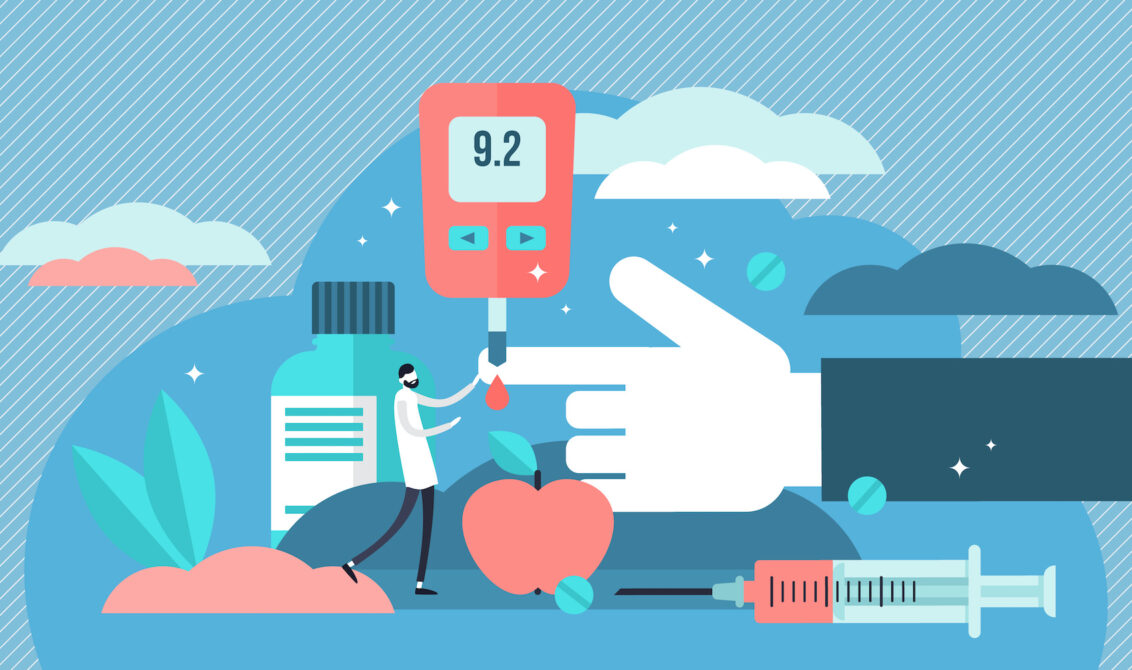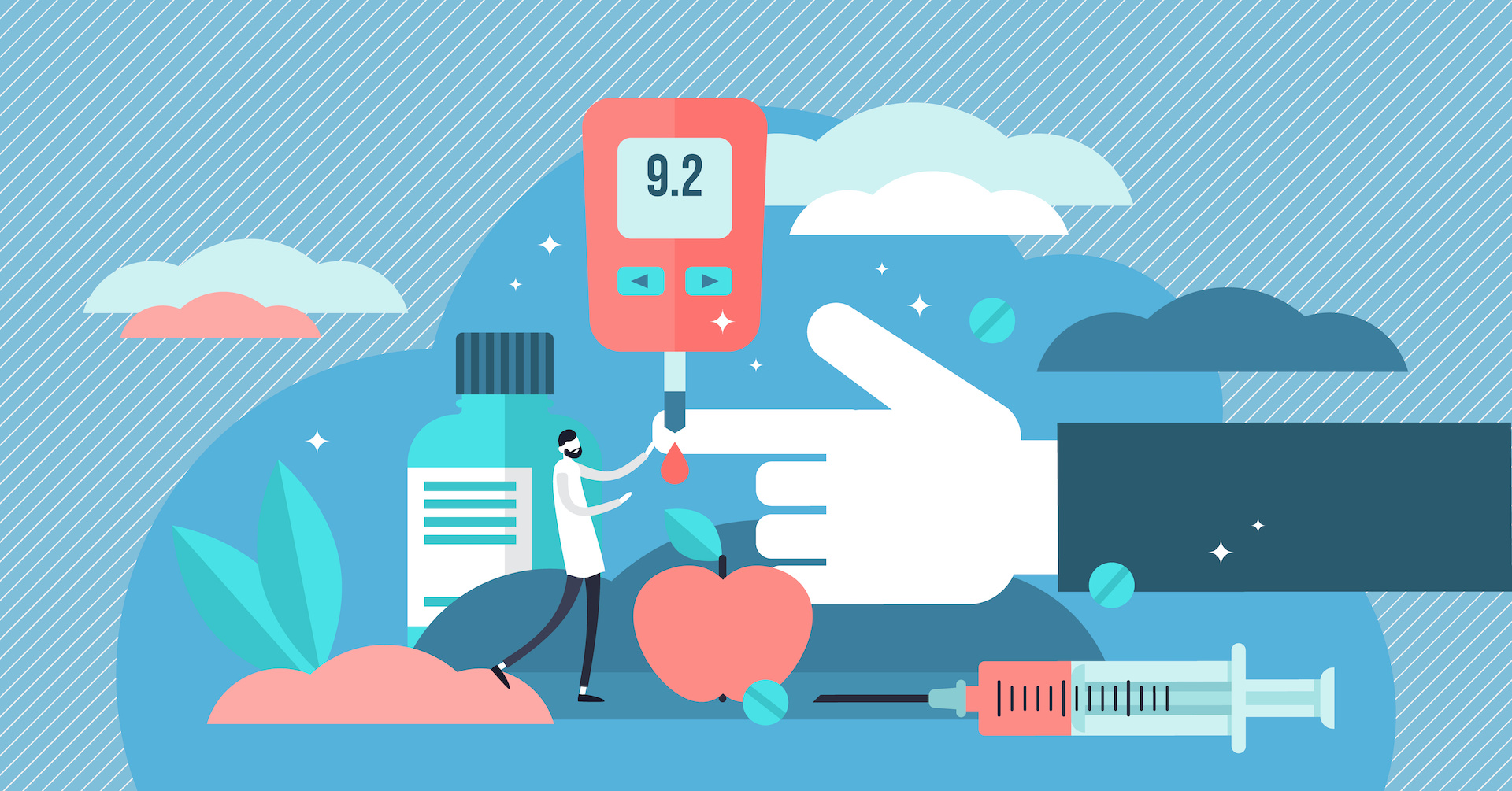November is Diabetes awareness month, and a great time to educate yourself on all things diabetes related. For whatever reason, there is still a myth, or belief, that people who live with Diabetes cannot qualify for life insurance coverage.
It is true that those who have medical conditions struggle to get life insurance policy. However, having diabetes, like many other medical conditions doesn’t automatically rule out all your chances of getting insurance coverage.
If you are diabetic and you want to get life insurance, you may still qualify but you will typically have to pay a higher premium than what a healthy person would have to. How much higher? That would depend on a number of factors like the type of diabetes you have, the type of insurance coverage you’re looking for
Life insurance policy premiums depend on type of diabetes
Life insurance premiums are calculated based on the expected lifespan of an applicant. Medical conditions can reduce life expectancy and increase the risk on the life insurance company. This is why premiums tend to be higher for diabetics than they are for healthy individuals.
Even if your diabetes is under control, it can cause other potential health issues which still make it a risk factor. On the other hand, uncontrolled diabetes can lead to serious issues that can cause death. Here are some conditions:
- Heart disease
- Issues with organs like eyes, teeth, etc.
- Kidney-related issues or kidney failure
- Neurological issues
- Obesity
- Hypertension
- Stroke
The good news is that not all people with diabetes are the same. Several factors such as age, current health condition and lifestyle choices (like diet, exercise, tobacco use, etc.) are also considered while rating applicants. Life insurance companies check how well-controlled your diabetes is and determine its potential risk to your future health.
While filing for an application, the insurance company will usually require you to give a medical underwriting. This could include a form that asks standard health-related questions. For example, you may be asked about your history with diabetes, its diagnosis, your management methods (such as insulin, medicines, exercise, diet, etc.), your recent blood sugar levels, A1C levels, cholesterol readings and blood pressure levels.
You may also be asked to provide medical records for the verification of your provided health history. Additionally, in most cases, you will also be required to complete some physical exams such as the microalbumin test (to check for potential kidney damage).
If you prefer to skip the medical exams, there are life insurance options available (refer to “Full underwriting life insurance policies vs. No medical exam policies”) but they’re usually more expensive.
The details of your diabetes determines insurance rates
The underwriting process of policy application will ask you to specify what type of diabetes you have – Gestational Diabetes, Type 1 Diabetes or Type 2 Diabetes. While applicants with all 3 types of diabetes do stand a chance for insurance coverage, their premium rates, coverage benefits and even approval rates will vary.
Gestational diabetes is typically a temporary medical condition that affects pregnant women. It is caused by some hormonal changes that typically go away after child birth. If you have gestational diabetes, it’s best to wait many months after your pregnancy before you apply for life insurance. If the diabetes goes away, the application process will be a lot easier and also less expensive.
Type 1 diabetes is also called insulin-resistant diabetes. This type of diabetes is rare but is also a lot harder to control. It is typically diagnosed in younger people, including children, which make it a higher risk because it can affect the patient for a longer period. This is why people with Type 1 diabetes have to pay higher premiums.
Matt Schmidt of Diabetes Life Solutions mentions “ life insurance underwriters will almost always view a Type 1 individual as a higher risk compared to a person living with Type 2 Diabetes. Because of this, life insurance rates for Type 1 Diabetes tend to be 25% to 40% higher.”
Type 2 diabetes is the more common type of diabetes that is typically diagnosed in older people. It’s easier to control with the right diet, exercise and medication. With good diabetes management, you can be eligible for insurance policies at the most affordable rates when compared to people with other types of diabetes.
However, you may have to pay higher premiums if your Type 2 diabetes comes with insulin-dependency or other diabetes-related medication conditions.
Types of life insurance policies for people with diabetes
As a diabetic, you have several options available for life insurance policies, although they may cost more. While filing your application, two important factors to consider are the time period of the policy and the insurance underwriting.
Permanent vs. term life insurance policy
Term life insurance policies are meant to provide coverage only for a specific period of time (known as a policy’s ‘term’). They don’t have any cash value but they’re usually the cheapest option available for diabetics (they offer the best death benefit for every premium dollar you pay).
Some term policies can be converted to permanent life insurance before the term completion, without any extra medical underwriting requirements. This is an excellent option for you if you’ve already purchased a term insurance policy before your diabetes diagnosis.
Permanent life insurance policies include universal life insurance and whole life insurance. They are typically more expensive but are designed to give you coverage for life. They also have a cash value that builds over time to pay for your future expenses like retirement income, medical bills, etc.
It’s best to buy your life insurance sooner than later as policies get more expensive as you get older. Being diagnosed with medical conditions only raises the expense even more. There’s also a chance that you may not even be eligible for insurance coverage after some future health complications.
Full underwriting life insurance policies vs. No medical exam policies
Insurance companies have a standard underwriting process based on which they qualify you for certain policies. This process typically requires you to provide your medical history, fill out a diabetes-related questionnaire and also complete a physical examination. Underwriting policies take more time and are difficult to qualify for but they usually offer lower premium rates.
No medical exam policies offer you coverage without having to go through medical exam. This is useful if you’re unsure about your health condition and that you may not qualify the entire underwriting process. However, they offer limited coverage of $50,000 for life and $500,000 for term insurance.
Even with no-exam policies, you may still be required to submit your health records and fill out the diabetes-related questionnaire. It is important to understand that if an applicant provides false information about his health issues, the insurance policy could become void. Also, the company could deny the insurance claim to the family when the policy-holder dies.
Melissa Thompson from Diabetes 365 mentions “As the life insurance industry evolves, many people with Type 1 or Type 2 Diabetes may qualify for a policy on a non medical exam basis. Non medical exam life insurance with Diabetes policies may even be the same price compared to applying on a medical exam basis. There has been lots of positive changes made by life insurance providers over time, and it’s getting easier to be approved if you’re apart of the Diabetes community.”
What if I am disqualified?
There’s a chance that your application is denied due to your diabetes, even with a no medical exam policy. If you’re facing such an issue, you could consider a guaranteed-issue policy. This is also called a final expense policy and is typically more expensive compared to the other forms of life insurance coverage. It is usually bought by older people to take care of their funeral costs and such expenses.
Guaranteed-issue policies don’t offer death benefits higher than $25,000 and also typically require a waiting period of 2-3 years. This means that if the policy-holder dies during the waiting period, the family wouldn’t be entitled to the death benefit. However, the company would pay back the policy’s premium paid by the holder with an additional interest.
What’s my best life insurance option if I have diabetes?
Check with your employer if your employee benefits include group life insurance. This could be the best and most affordable coverage option even if it covers a smaller amount.
Speak to a financial advisor to help you if you want to buy a life insurance policy individually. Be frank about your health condition so they can advise you the best options and also advocate for you. At the same time, ensure that you’re taking the necessary measures to keep your diabetes under control. This can play an important factor in your policy consideration.
FAQ’s about life insurance policies for those with diabetes
Am I eligible for life insurance policy if I have diabetes?
Yes, many diabetics get life insurance policies. However, your eligibility for different types of policies and the premium costs will vary depending on the type of diabetes and your diabetes management. You are more likely to be eligible if you make healthy lifestyle choices and keep your diabetes under control.
How much does life insurance cost for a diabetic?
Life insurance policy costs are determined by several factors like age, gender, overall health, medical history, tobacco use, diabetes type as well as the policy coverage amount. Having diabetes will increase the policy rates but there is no standard rate for all diabetics. Type 1 diabetes is considered a greater risk when compared to Type 2 diabetes. Your age of diagnosis also factors in. It is best to speak to a financial advisor to determine the specific policy cost for your specific condition.
As a diabetic, what is my best option for life insurance?
There is no standard ‘best’ life insurance policy for all diabetics. Every policy has different requirements and rates vary according to different factors. While premium rates are generally higher, certain factors like how long the applicant has had diabetes for, how well-managed the diabetes is, etc. can significantly reduce the cost. Generally, term life insurance is more affordable for diabetics than whole life insurance because of its larger death benefit.
Do I need to inform the insurance company about my diabetes?
Yes. As part of the underwriting process, you will be required to provide your full medical history and also submit your health records for verification. You may also be required to complete a medical exam for certain policies.
Whether or not you’re aware of your medical condition and whether or not you reveal it, insurance companies will look for certain indications in your tests to determine your eligibility. It is best not to neglect or disclose your medical situation as it can negatively affect your insurance claim to your beneficiaries once you die.
© YFS Magazine. All Rights Reserved. Copying prohibited. All material is protected by U.S. and international copyright laws. Unauthorized reproduction or distribution of this material is prohibited. Sharing of this material under Attribution-NonCommercial-NoDerivatives 4.0 International terms, listed here, is permitted.














